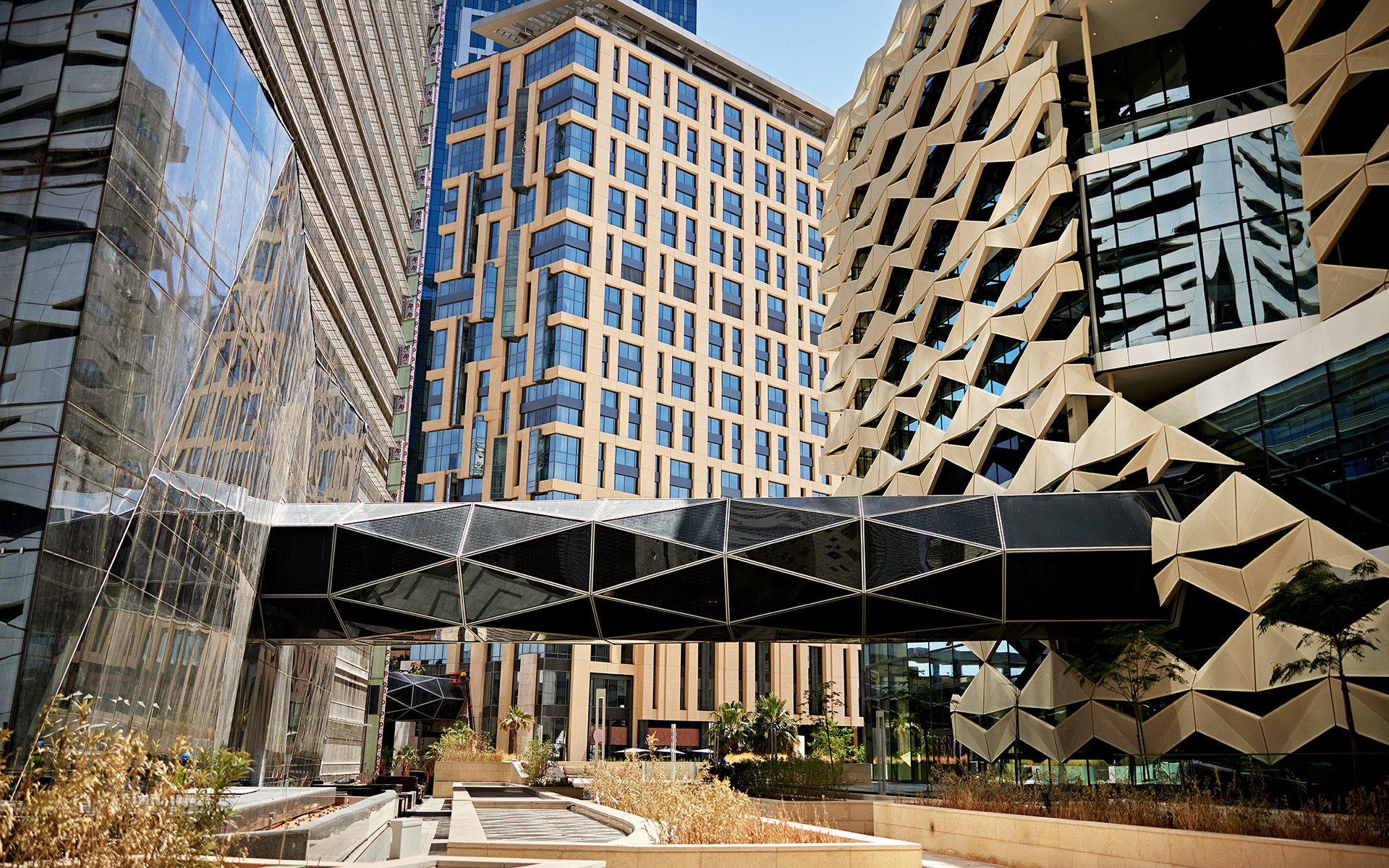Riyadh is a rapidly growing commercial hub with a strong retail sector and corporate presence, and ambitious aviation plans.
City Class Score
| Commercial Hubs | |
| Export Champions | |
| Mobility Connectors | |
| Climate Resilient |
Corporate HQs, MNC presence, branded outlets, hotels, manufacturing, start-up ecosystem,
transport linkages, population, and income.
Go to the class information
Manufacturing, industrial parks, export share and share change by category, air and port
infrastructure, freight time to market, trade agreements, and expert interviews.
Go to the class information
Passenger traffic, flight connectivity, air-cargo flights, port infrastructure, container
ship sailings, and major road networks.
Go to the class information
Coastal and river flooding, extreme rain, extreme heat and humidity, cyclones, and water
scarcity.
Go to the class information
Riyadh’s new financial district has transformed the city’s skyline. Futuristic,
glass-clad skyscrapers shimmer under the desert sun, reflecting the city’s ambition and modernity.
The buildings simultaneously draw on local building traditions, such as using mashrabiya screens to
provide shade and ventilation, creating continuity between the city’s past and its fast-changing
future. The financial district isn’t the only change. Foreign visitors are a common sight at the
city’s growing entertainment and tourist spots, from dining options in Hittin to the historic
district of At-Turaif. Riyadh’s nonstop transformation is an important reason the city ranks high as
a commercial hub.
The city’s rise reflects the importance of national industrial policy, a
key megatrend. Governments around the region are increasingly assertive in their efforts to reshape
their countries, and Saudi Arabia’s Vision 2030 program stands out for its ambition and immediate
impact. Riyadh’s commercial landscape has changed rapidly during the past 10 years, even as a range
of so-called giga-projects transform other parts of the country. The city may equally benefit from
supply chain de-risking, as manufacturers seek options outside of China, especially in sectors that
are energy intensive or reliant on petrochemical inputs.
Riyadh’s commercial success is
already evident, but there is more opportunity to grasp. The city ranks high on our list, benefiting
from its affluence and strong retail sector compared with some other hubs. Luxury brands have a
strong presence in the city and the number of five-star hotels is growing rapidly. Global retailers
are also expanding their footprint. A vibrant international tourism sector boosting air connectivity
and retail is a common feature among the largest commercial hubs on our list, and Riyadh is
developing this opportunity as part of Vision 2030, with the country receiving 27 million inbound
tourists in 2023.
Riyadh’s role as a hub for a large domestic market also contributes to
its ranking. The city serves as headquarters for a large and growing number of listed domestic
companies. The number of multinationals based in the city is smaller but expanding rapidly in line
with the economy’s growth. Riyadh already ranks high on the list in terms of domestic aviation
activity, enjoying strength in a large internal market relative to most other countries in the
region. However, the real opportunities lie ahead, with investments in the aviation sector
potentially turning Riyadh into a regional and global hub for passengers and air cargo.

